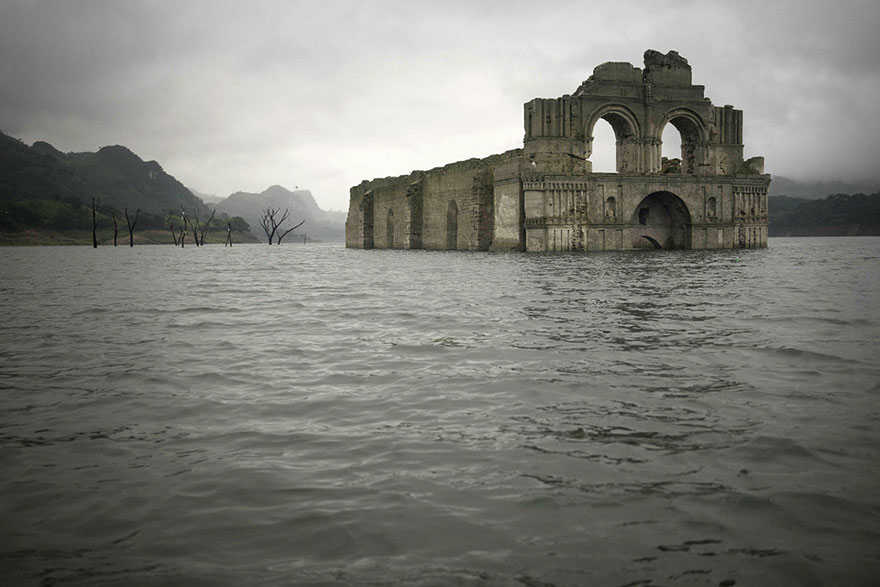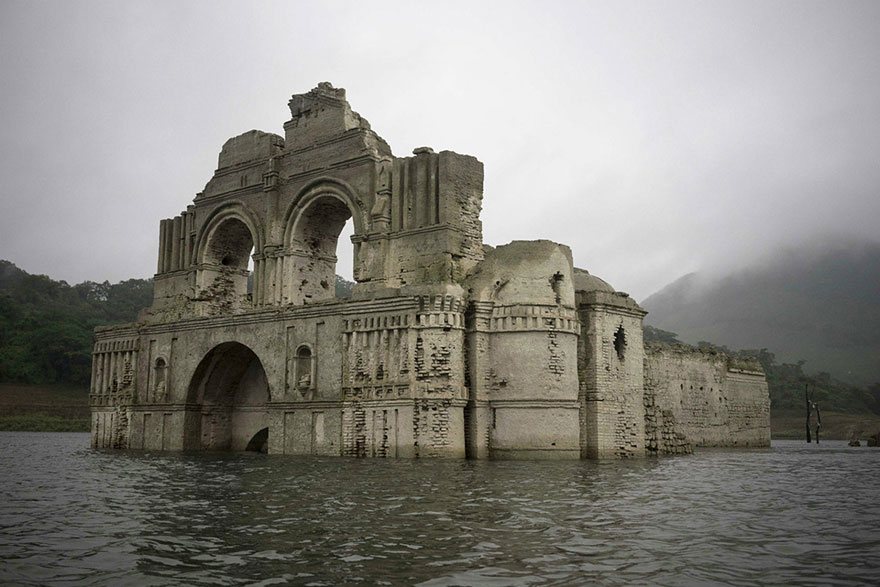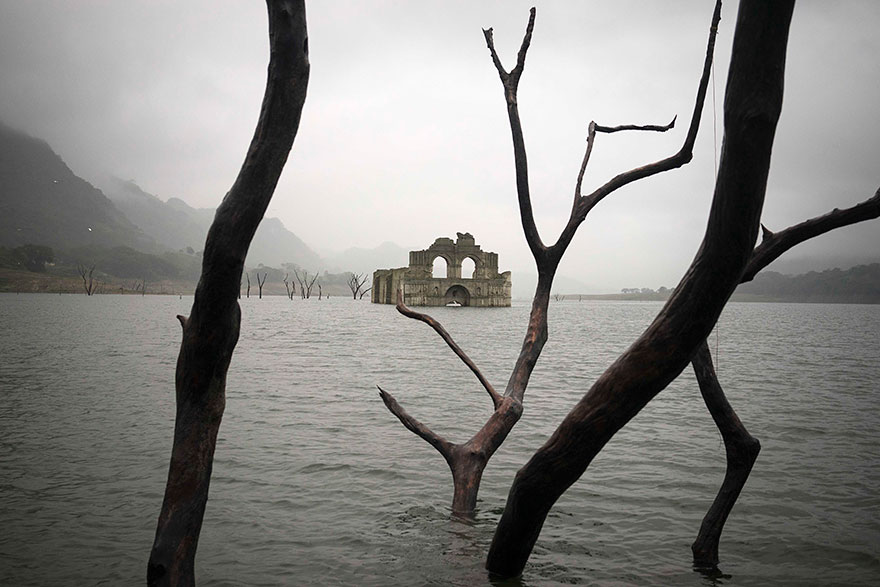
As water levels dropped from a Mexican reservoir, something rather surprising occurred. A 400-year-old colonial church emerged, as if it was a ghost attempting to come back to life. A drought this year hit the watershed of the Grijalva river, dropping the water level in the Nezahualcoyotl reservoir by a whopping 82 feet

The church is 183 feet long and 42 feet wide, with its walls rising 30 feet. A bell tower reaches 48 feet above the ground. It’s known as the Temple of Santiago (or of Quechula), and was built some time in the 16th century but “was abandoned due the big plagues of 1773-1776,” Mexican architect Carlos Navarrete told AP News. The church was built due to its position along an important highway built and used by Spanish conquistadors. “It was a church built thinking that this could be a great population center, but it never achieved that,” Navarrete added. “It probably never even had a dedicated priest.”

Its importance was derived from its location on the King’s Highway, a road designed by Spanish conquistadors and still in use until the 20th century. Navarette further explained, “At that time we still found the wood from the chorus loft and the roof beams,” he said. “Also a large ossuary of the victims of the plague that depopulated the area.
“It was a church built thinking that this could be a great population center, but it never achieved that,” Navarrete added. “It probably never even had a dedicated priest, only receiving visits from those from Tecpatan.”
Local fishermen have been taking visitors onto the Grijalva river to visit the church, ferrying them out to see its remains.


That is so cool! Can you imagine living by that river then a drought comes and that beautiful building emerges!? How incredible! Thank you so much for sharing this story, so amazing.
Downvoting a post can decrease pending rewards and make it less visible. Common reasons:
Submit